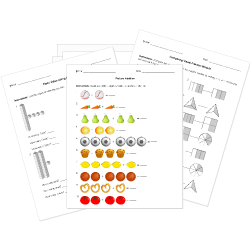Common Core Standard HSG-SRT.A.2 Questions
Given two figures, use the definition of similarity in terms of similarity transformations to decide if they are similar; explain using similarity transformations the meaning of similarity for triangles as the equality of all corresponding pairs of angles and the proportionality of all corresponding pairs of sides.
You can create printable tests and worksheets from these questions on Common Core standard HSG-SRT.A.2! Select one or more questions using the checkboxes above each question. Then click the add selected questions to a test button before moving to another page.







